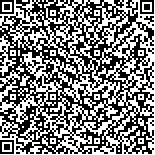张林,刘东旭,兰月,等.间歇性θ短阵脉冲刺激对工作记忆模型食蟹猴空间延迟反应的影响[J].中华物理医学与康复杂志,2022,44(5):385-389
扫码阅读全文

|
| 间歇性θ短阵脉冲刺激对工作记忆模型食蟹猴空间延迟反应的影响 |
|
| |
| DOI:10.3760/cma.j.issn.0254-1424.2022.05.001 |
| 中文关键词: 工作记忆 空间延迟反应 模型 食蟹猴 磁刺激 |
| 英文关键词: Working memory Spatial delayed response Cynomolgus macaques Magnetic stimulation Theta burst stimulation |
| 基金项目:国家自然科学基金项目(81974357, 82072548, 81772438);国家重点研发计划项目(2017YFA0105104);广东省科技计划项目(2016A020213003);广州市科技计划项目(201803010083) |
|
| 摘要点击次数: 4329 |
| 全文下载次数: 5242 |
| 中文摘要: |
| 目的 观察间歇性θ短阵脉冲刺激(iTBS)对工作记忆模型食蟹猴空间延迟反应的影响。 方法 选取8只8~9岁的雄性食蟹猴,采用空间延迟反应实验构建工作记忆模型,并对食蟹猴进行工作记忆等行为学评估和检测,最终纳入工作记忆模型构建成功的食蟹猴6只,按照随机数字表法将其分为真刺激组和假刺激组,每组3只。真刺激组食蟹猴接受iTBS真刺激,假刺激组食蟹猴接受iTBS假刺激,刺激强度为35%最大输出强度、丛内刺激频率50 Hz、丛间刺激频率5 Hz,每刺激2 s间歇8 s,共刺激192 s,每日1次,共5 d。iTBS干预前、后,对食蟹猴进行称重及工作记忆能力评价,记录取食总体有效例数、较短延迟期及较长延迟期内取食有效例数。 结果 建模前、后和iTBS干预前、后,食蟹猴的体重差异均无统计学意义(P>0.05)。iTBS干预后,真刺激组食蟹猴取食总体有效例数为3只、较短延迟期内取食有效例数为3只,与假刺激组比较,差异有统计学意义(P<0.05)。较长延迟期内,真刺激组有2只、假刺激组有1只食蟹猴干预后的取食正确率提高超过10%,但2组比较差异无统计学意义(P>0.05)。 结论 iTBS对工作记忆模型食蟹猴的空间延迟反应有一定影响,可提高其工作记忆能力。 |
| 英文摘要: |
| Objective To observe any effect of intermittent theta burst stimulation (iTBS) on the spatially-delayed responses of working memory using cynomolgus macaques. Methods The working memory of six male cynomolgus macaques (8-9 years old) was trained using a spatially-delayed response task. They were then randomly divided into an iTBS group and a control group, each of 3. The iTBS group was given iTBS at an intensity of 35% of the maximum output, with 2 seconds of stimulation followed by 8 seconds of rest with trains of 50Hz bursts repeated at a frequency of 5Hz over a period of 192 seconds once daily for 5 days, while the control group was given sham iTBS. Before and after the 5 days, the body weight and working memory of each animal were evaluated. The total number of effective feeding episodes, and of effective feeding episodes with short and long delay periods were recorded. Results There was no significant change in the average body weight of either group before and after the modeling and iTBS intervention. After the intervention the number of total effective feeding cases and those with a short delay period were both significantly higher in the iTBS group than in the control group. However, no significant inter-group differences in the effective feeding cases with a long delay period were observed. Conclusions iTBS is effective in improving the spatially-delayed responses of working memory, at least in cynomolgus macaques. |
|
查看全文
查看/发表评论 下载PDF阅读器 |
| 关闭 |